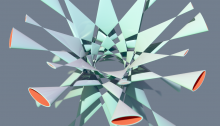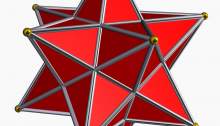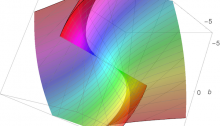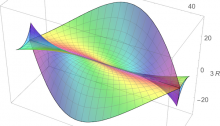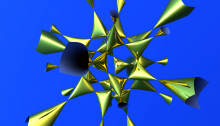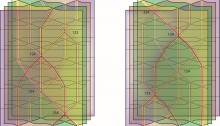Endrass Octic
An octic surface is one defined by a polynomial equation of degree 8. The Endrass octic, drawn above by Abdelaziz Nait Merzouk, is currently the octic surface with the largest known number of ordinary double points: that is, points where it looks like the origin of the cone in 3-dimensional space defined by x2+y2=z2. It has 168 ordinary double points, while the best known upper bound for a octic surface that’s smooth except for such singularities is 174.

